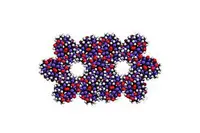Electronics News
Archive : 5 July 2015 год
 Imec has announced that it and its partners have completed a three-year programme to make a variety of silicon photonics technologies accessible for industry and academia worldwide. Within the ESSenTIAL programme, funded by the European Commission, imec has worked to develop advanced multi-project-wafer services (MPW) and packaging services for silicon photonics.
Imec has announced that it and its partners have completed a three-year programme to make a variety of silicon photonics technologies accessible for industry and academia worldwide. Within the ESSenTIAL programme, funded by the European Commission, imec has worked to develop advanced multi-project-wafer services (MPW) and packaging services for silicon photonics.
Silicon photonics is a key enabling technology for a range of markets, and builds on the technology portfolio and economy of scale of CMOS fabs to manufacture sophisticated photonic integrated circuits with a combination of passive and active devices.
The ESSenTIAL program has expanded the services of ePIXfab, an alliance of European entities set up to support the emergence of a fabless silicon photonics ecosystem. ePIXfab claims it has provided affordable MPW services to fabless R&D teams worldwide that are developing photonic circuits.
"ePIXfab has helped to accelerate the field of silicon photonics and to let it move from a research field to a field of critical industrial importance," said Ghent University professor Roel Baets, one of the founders of ePIXfab and research team leader with imec.
Within the ESSenTIAL project, the portfolio of silicon photonics services offered by ePIXfab has been extended in many ways. High speed active devices were added to the MPW offering. In total over 200 silicon photonics circuit designs were prototyped by imec and its partners.
Pic: Professor Roel Baets
Author
Tom Austin-Morgan
Source: www.newelectronics.co.uk
 Altera has joined the Open Platform for NFV (OPNFV), a community-led, industry-supported, open-source reference platform for network function virtualisation (NFV). NFV uses IT technologies to virtualise entire classes of network node functions into building blocks that may be connected, or chained, to create communication services.
Altera has joined the Open Platform for NFV (OPNFV), a community-led, industry-supported, open-source reference platform for network function virtualisation (NFV). NFV uses IT technologies to virtualise entire classes of network node functions into building blocks that may be connected, or chained, to create communication services.
Joining working groups inside the OPNFV, Altera are to expand the use of FPGA accelerators in virtual machines running different software and processes on top of industry-standard, high-volume servers, storage and cloud computing infrastructure.
"FPGAs can reduce capital and operational expenditures, speed service and improve product introduction times for NFV applications, providing a more efficient solution," said Francis Chow, vice president and general manager of the Communications Business Unit at Altera.
FPGAs act as accelerators by offloading compute workloads, using less power than general-purpose graphics processing units and central processor units, which helps data centres, such as Facebook's Pineville data centre in Oregon, run cooler.
"OPNFV is about collaboration from a diverse group of players from across the industry to craft an open platform that we can all use to accelerate NFV." said Heather Kirksey, director, OPNFV. "We are excited to welcome Altera, who is poised to help us implement the goals of open source NFV."
Author
Tom Austin-Morgan
Source: www.newelectronics.co.uk
 Looking to improve performance and reduce the risks of overheating, South Korean researchers at Pohang University have created a lithium-ion battery made from a porous solid.
Looking to improve performance and reduce the risks of overheating, South Korean researchers at Pohang University have created a lithium-ion battery made from a porous solid.
The new battery is built from pumpkin shaped molecules called cucurbit[6]uril – or CB[6]. These molecules are organised in a honeycomb like structure. The molecules have 1D channels running through them, measuring 7.5Å on average. The physical structure of the porous CB[6] enables the lithium ions to battery to diffuse more freely than in conventional lithium ion batteries and to exist without the separators found in other batteries.
In tests, the CB[6] solid electrolytes were said to show impressive lithium ion conductivity. To compare this to existing battery electrolytes, the team measured the lithium transference number, which was recorded at 0.7 to 0.8 compared to the figure of 0.2 to 0.5 of existing electrolytes. The team also cycled the batteries at temperatures between 25 and 100°C for four days. The cells were said to show no thermal runaway and hardly any change in conductivity.
The CB[6] framework is said to accommodate various conventional liquid electrolytes and to potentially enable lithium air batteries.
Author
Graham Pitcher
Source: www.newelectronics.co.uk

